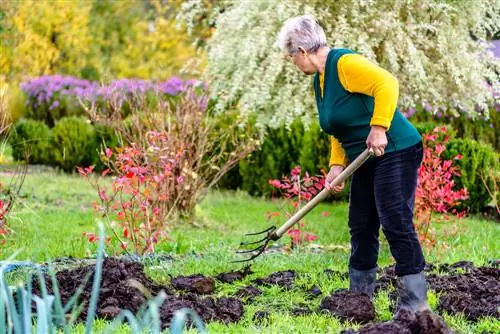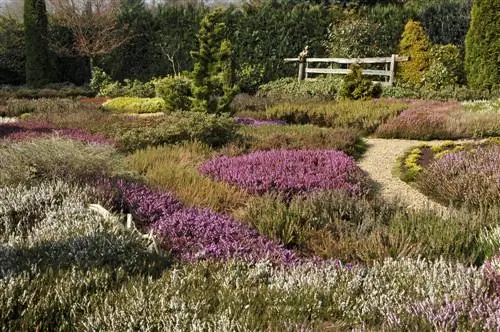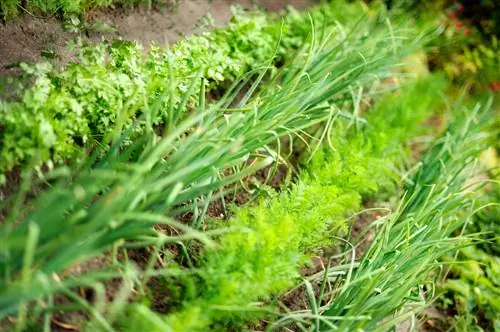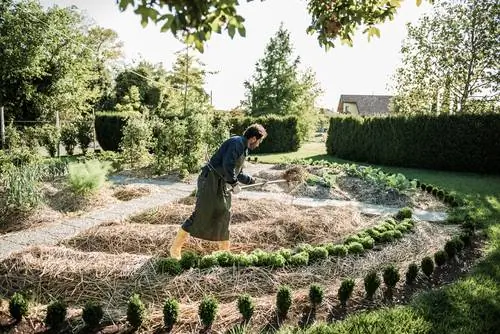- Author admin [email protected].
- Public 2024-01-02 03:03.
- Last modified 2025-01-23 11:21.
No two permaculture gardens are the same, as one of the central elements of permaculture is making optimal use of existing resources, orientations and conditions. Therefore, every permaculture garden is unique. Nevertheless, there are a few reference points that are explained here as examples, such as the division into zones. Below are examples of plants and elements you can implement in your permaculture garden.
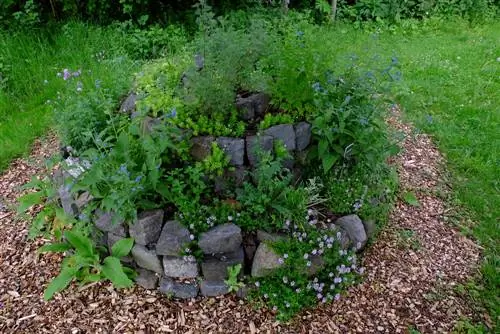
What examples are there for designing permaculture gardens?
Examples of elements in a permaculture garden are the division into zones such as residential areas, kitchen gardens, vegetable gardens and natural zones. Typical plants are native wild varieties, fruit and nut trees as well as mixed cultures of vegetables and herbs. The design varies depending on individual circumstances and resources.
The division into zones
A permaculture garden is divided into zones that ensure optimal management and use. These six zones are:
- the residential area: There are usually buildings here where the permaculture gardener lives. This is the central point of the garden and should be easily accessible from all important points.
- the kitchen garden: The kitchen garden is located directly next to the living area, so that all important foodstuffs are quickly accessible. This area requires the most maintenance.
- the vegetable garden: There are significantly more plants here than in the small kitchen garden, but they require a little less care. Most of the time a greenhouse is also set up here
- Agriculture, Trees and Animals: This zone is intended for larger scale cultivation. There are fruit trees, animals live here and wheat or corn is grown.
- Pastureland, wood, trees: This area needs almost no care. Animals graze here and there are trees for growing fruit and providing wood.
- Nature Zone: This area should not be touched by the gardener. Here nature grows the way it wants and offers insects and other animals a natural habitat.
Example elements for the permaculture garden
Some elements have emerged for productive cultivation in the permaculture garden and have become practically a must. Here are a few examples of the elements that appear in almost every permaculture garden:
- Herb snail
- Raised bed
- hillbed
- Natural pond
Fruits, vegetables and other plants in the permaculture garden: examples
Of course, what you plant in the permaculture garden depends primarily on what you want to eat. It is important that cultivation is staggered so that you can harvest all year round. Mainly native wild varieties and old varieties of vegetables and fruit are grown in the permaculture garden in order to promote natural biodiversity as it once was. Mixed culture is extremely important in permaculture. You can read more about good combinations here. Here are a few examples of fruits, herbs and vegetables:
- Tomatoes, lettuce, potatoes, beans, pumpkin, cucumbers
- Wild berries, wild strawberries
- Fruit and nut trees
- Wild herbs such as plantain, dandelion, watercress, chickweed, nettle


